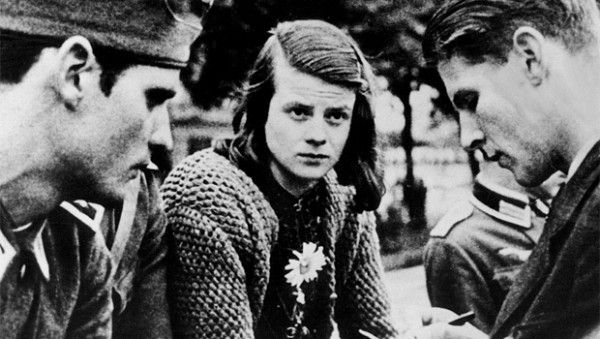
Pop Culture and the Sexual Revolution
Many Hollywood celebrities, like the Kardashians, are changing culture by re-branding femininity and sexuality, and there will continue to be serious consequences.
An onslaught of unrealistic images and deceptive advertisements communicate a twisted message to women. Many of these images, ads and TV shows tell women they need to measure up to this idealized standard of perfection. Modern media is fueling a sexual revolution. This revolution also spreads an attitude of, “Do whatever you want. Be whatever you desire. It’s your body. It’s your right.”
Perfectionism is thrust upon women at nearly every turn. Ads plastered in magazines, on billboards, across TV screens and down the sides of buildings and busses tell women that beauty equate to perfection. Yet, nearly every image is photoshopped. One photo retoucher confessed about advertisements, “Every picture has been worked on, some twenty, thirty rounds…they are per fected to death.” Photoshoppers have revealed that they pick and choose the body parts they like among several women to create one ideal image sold in magazines and advertisements. In fact, many of the models you see in photos are four separate women pieced together into one. What you see is not what you get. This is the type of extreme photoshopping that women are convinced is reality. Thankfully, some models and actresses have spoken out. Model Cindy Crawford confessed, “I wish I looked like Cindy Crawford.” Even high-paid models can’t measure up to their own image portrayed in magazines.
fected to death.” Photoshoppers have revealed that they pick and choose the body parts they like among several women to create one ideal image sold in magazines and advertisements. In fact, many of the models you see in photos are four separate women pieced together into one. What you see is not what you get. This is the type of extreme photoshopping that women are convinced is reality. Thankfully, some models and actresses have spoken out. Model Cindy Crawford confessed, “I wish I looked like Cindy Crawford.” Even high-paid models can’t measure up to their own image portrayed in magazines.
Several years ago, I remember when the media was in an uproar over Kim Kardashian’s controversial, semi-nude photo. Ironically, she posted it to celebrate International Women’s Day. Other than two black bars blocking out her private areas, her explicitly nude photograph was taken from the privacy of her bathroom, then posted online. What’s the big deal? Some may argue that they’ve seen bikini pics more revealing than Kim’s bathroom selfie. The point is not how graphic the photo is, the point is that this type of celebrity behavior affects kids and debases the value of femininity.
Elle Magazine took to Facebook in full support of Kim’s photo, demanding female opponents of Kim’s post to back down: “Kim Kardashian West has had ENOUGH of being shamed for her sexuality.”
Unlike what Elle may say, outrage from thousands of women regarding Kim’s photo stems from the fact that this type of image demeans women and diminishes their value to the level of their physicality alone. It’s no wonder that women are agitated. Sensuality should never be celebrated in place of virtue.
 Women are angry and tired of their sexuality being trivialized and sold to the lowest bidder. Women are worth more than their physical image. Girls suffer enough peer pressure. Why are women required to look a certain way to fit the status quo? If women disagree with any celebrity who posts lewd imagery, it may not be to shame the woman in the photo, but instead, to encourage that women should live up to a higher standard of decency. Women, especially those on big platforms should uphold a standard of decency and class for themselves, but also to protect young girls from objectification and sexual exploitation. After all, the cost of intertwining girls’ value with their sex appeal is high.
Women are angry and tired of their sexuality being trivialized and sold to the lowest bidder. Women are worth more than their physical image. Girls suffer enough peer pressure. Why are women required to look a certain way to fit the status quo? If women disagree with any celebrity who posts lewd imagery, it may not be to shame the woman in the photo, but instead, to encourage that women should live up to a higher standard of decency. Women, especially those on big platforms should uphold a standard of decency and class for themselves, but also to protect young girls from objectification and sexual exploitation. After all, the cost of intertwining girls’ value with their sex appeal is high.
While Elle Magazine proclaims that women are shaming Kim’s sexuality, studies show that teen girls are struggling with real shame and depression. These negative emotions stem in part from the media’s deceptive and overly provocative imagery. An average teen girl spends about 7-10 hours daily consuming media content, according to the Kaiser Family Foundation. Teen girls are absorbing a way of life and habits exemplified by their favorite pop icons. Research suggests that the influence of media on young girls causes “3 out of 4 girls to struggle with depression, guilt, and shame,” according to the Representation Project.
Sexuality today is meaningless, cheap and purely physical. What does that say to a little girl about her value? One source says that “Self image issues can lead to eating disorders, drug and alcohol use, cutting, bullying and sexual addictions.” Imagine the psychological damage young girls endure. To what extent can media branding alter the meaning and function of a woman’s role in the world, relationships, sex, marriage and family?
It’s hard to grasp the intensity of the problem because our society has become so desensitized. Media sensationalism is the new normal, and the new normal is setting the bar lower with each generation. Look at Miley Cyrus, for example. Within a few years, she went from a cute, conservative childhood starlet, to a hyper sexualized pop star.
hard to grasp the intensity of the problem because our society has become so desensitized. Media sensationalism is the new normal, and the new normal is setting the bar lower with each generation. Look at Miley Cyrus, for example. Within a few years, she went from a cute, conservative childhood starlet, to a hyper sexualized pop star.
In a photo spread for Paper Magazine, Miley was marketed as the new image for young women who stand for sexual liberation. Apparently going nude and rolling around in the dirt with a pig somehow encapsulates female empowerment. It’s no surprise that she came to Kim Kardashian’s defense when women, including other female celebrities, protested Kim’s graphic bathroom photos.
Unfortunately, the typical, cliché response to anyone who opposes these types of photos or imagery is basically, “Don’t judge! It’s her body, her choice!”
It’s one thing to say that what a celebrity does in the privacy of their home stays at home, but it’s quite another when video and photographs are intentionally taken and posted to the web. Material online is no longer a private issue. These types of photos do have a powerful effect on people. They not only influence the way women see themselves, but also impact the way men see women.
We are training men, especially young men, to see women as sex objects. Social media and television have become the new school-house where young boys are taught that women should be seen and used as playthings to appease their sexual appetites. One report shows that on average, “Music videos contain 93 sexual situations per hour, including 11 hard-core scenes depicting behavior like intercourse and oral sex.” Robin Thicke’s “Blurred Lines” music video demonstrates this perverse treatment of women. In his video, most of the women are completely nude and displayed as sexual toys grasped and passed around by the men. Thicke’s lyrics say it all:
“Okay now he was close, tried to domesticate you. But you’re an animal, baby, it’s in your nature. Just let me liberate you…But you’re a good girl. The way you grab me. Must wanna get nasty.”
It’s unfortunate that teen boys are the main viewers of music videos today, videos that heighten their desire for pornographic material. Evidence shows that this is fueling them to handle women in harmful ways and to use women to indulge their senses. This type of pornographic and overly sexualized media instructs its viewer that it’s okay to treat women heartlessly and even sadistically. As the research team at Fight The New Drug has proven, this can lead to violence and sexual assault against women and young girls. It seems undeniable that celebrities and mass media have significant power influencing culture today.
If you are a woman and are reading this, please realize that you should never be valued by what you look like, wear or weigh. You are valuable because you are a person made in the image and likeness of God. You are enough just as you are, and if you are not loved for who you are, then you are not being loved in the right way.
Ultimately, only so much can be said or written on this topic. Eventually, the twisted agenda of the modern media needs to be exposed for what it is and for what it’s doing to women. So, I leave you with “I Stand Up,” a video that unveils the destructive sway mass media holds on beautiful, young girls today.
By Jennifer Beard

